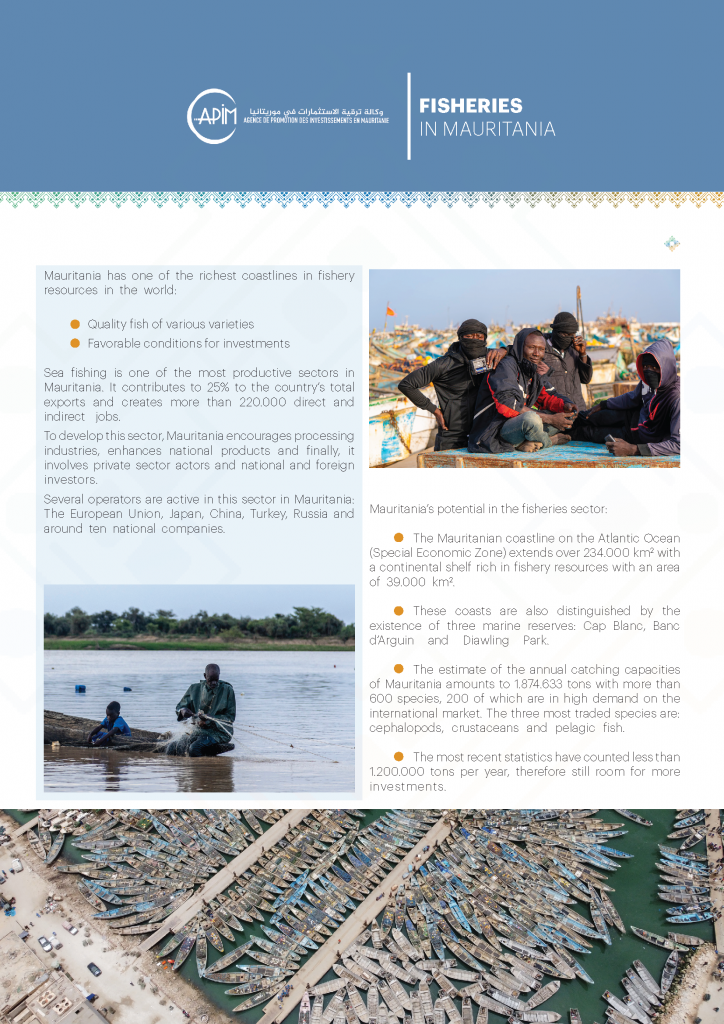Marine wealth
The fishing sector contributes significantly to the economic development in Mauritania through the significant revenues it provides, as well as its contribution to employment, major economic balances, and food security. Since this sector, which is considered a renewable source of wealth and occupies an important position in the national economy, is highly relied upon to be one of the engines of economic transformation in the next stage.
The Mauritanian coast extends from the delta of the Senegal River to the edge of Cape Abyad Bay on its waterfront, with a length of 754 km. The Islamic Republic of Mauritania has an exclusive economic zone estimated at 200 miles, an area of 234,000 km², with a wide continental shelf of 39,000 km². This area is known for its abundance and diversity of resources. More than 600 samples of fish have been identified, including 200 of commercial and marketable value, including cephalopods (octopus, bustard, squid,), crustaceans (shore shrimp, depth shrimp, lobster, crabs of the depths), and pelagic fish.
The Mauritanian beaches are characterized by being among the richest beaches in the world, where the quantities that can be caught without disturbing the biological balances of the stock are estimated at 1.8 million tons annually, a large percentage of which is still exported as a raw product without conversion and processing.
The fisheries that contain this stock are divided into 6 main groups, 4 of which are benthic and 2 surface fisheries. These fisheries are exploited through traditional fishing, which is the oldest type of fishing for Mauritanians, as well as through industrial fishing.
Great efforts have been made in recent years in the field of upgrading and developing the fishing infrastructure, as the independent port of Nouadhibou has been expanded and cleaned by removing shipwrecks, expanding the port of Al Raha Bay, constructing the Tanit port in the central region, and constructing a large mixed-use port in the southwest in the Ngaku region. Addition.


